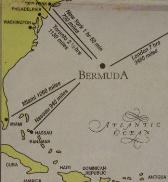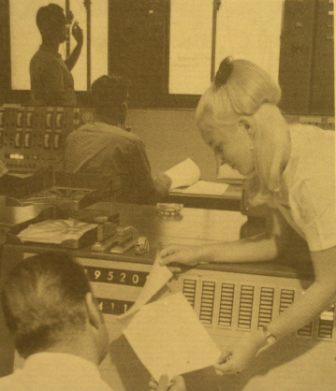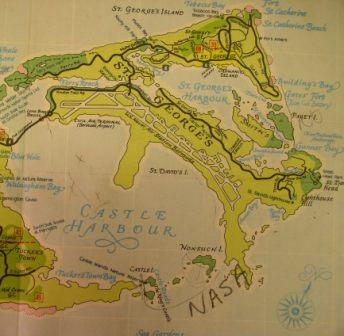Role of Bermuda Tracking Station
 As an integral part of the National Aeronautics and Space Administration's Manned Space Flight Network (MSFN), the Bermuda station played a vital role in the United States' Apollo lunar program and other flight missions. The Cooper's Island station was located on the southeastern tip of Bermuda about 600 miles out in the Atlantic from the U.S. east coast. Radar dishes and helical antennae were used to track anything from spacecraft to sparrows. Because of its location in relation to Cape Kennedy Florida, the Bermuda station had a dual purpose role for the Manned Space Flight Network (MSFN). At the time of launch, the primary mission of the station was to provide trajectory data to the computing facilities at Goddard Space Flight Center (GSFC). Computations based on data obtained during the final portion of powered flight was used to confirm the orbital "Go-No Go" decision. Bermuda normally acquired the spacecraft at approximately T + 3 minutes. As an integral part of the National Aeronautics and Space Administration's Manned Space Flight Network (MSFN), the Bermuda station played a vital role in the United States' Apollo lunar program and other flight missions. The Cooper's Island station was located on the southeastern tip of Bermuda about 600 miles out in the Atlantic from the U.S. east coast. Radar dishes and helical antennae were used to track anything from spacecraft to sparrows. Because of its location in relation to Cape Kennedy Florida, the Bermuda station had a dual purpose role for the Manned Space Flight Network (MSFN). At the time of launch, the primary mission of the station was to provide trajectory data to the computing facilities at Goddard Space Flight Center (GSFC). Computations based on data obtained during the final portion of powered flight was used to confirm the orbital "Go-No Go" decision. Bermuda normally acquired the spacecraft at approximately T + 3 minutes.
 The station was usually able to supply a minimum of 60 seconds of valid radar data prior to engine cutoff and orbital insertion. For subsequent passes of the space craft, Bermuda served as a normal tracking station with command capabilities.In addition to supporting manned missions, the Bermuda station commanded, tracked and acquired valuable data from a host of unmanned scientific and application satellites launched from Cape Kennedy and NASA'sWallops Island launch facility in Virginia.In between flight missions, the Bermuda station's sophisticated instrumentation was employed by scientists to conduct research ranging from the migratory habits of birds to astronomy. The station was usually able to supply a minimum of 60 seconds of valid radar data prior to engine cutoff and orbital insertion. For subsequent passes of the space craft, Bermuda served as a normal tracking station with command capabilities.In addition to supporting manned missions, the Bermuda station commanded, tracked and acquired valuable data from a host of unmanned scientific and application satellites launched from Cape Kennedy and NASA'sWallops Island launch facility in Virginia.In between flight missions, the Bermuda station's sophisticated instrumentation was employed by scientists to conduct research ranging from the migratory habits of birds to astronomy.

As a host to the United Kingdom, NASA began construction of the Bermuda station in the early 1960's. The station became operational by September 1961
Sources: Bendix Field Engineering Web Page, Royal Gazette 01/30/71, 'Tracking man in space Nasa Bermuda'
|

